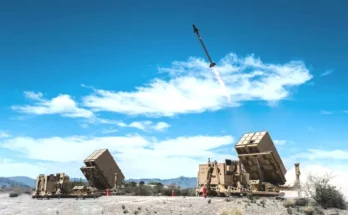
This past February, CAES was awarded a five-year, $38.5 million contract from the U.S. Navy to support the Surface Electronic Warfare Improvement Program (SEWIP) Block 2 program. This action made the company just the latest addition to the many contractors involved in moving the sweeping, multibillion-dollar program forward with its ambitious goals. CAES will provide spares, engineering services, and repairs on antenna array panel assemblies for the program.
Through the SEWIP effort, the Navy is enhancing the capability of its SLQ-32 electronic warfare systems and other technology to provide early detection, analysis, and threat warning of, and protection from, anti-ship missiles. The program provides and supports a family of modular electronic warfare equipment that is installed on all Navy surface combatants, aircraft carriers, amphibious ships, and auxiliaries.
The FY24 U.S. defense budget includes over $2.8 billion in funding for SLQ-32 RDT&E and procurement through FY28. The budget supports the SLQ-32(V)6 and SLQ-32(V)7 variants through procurement and installation.
Among other recent contracting activity, in September 2022, Northrop Grumman was awarded a $16.2 million contract for SEWIP Block 3 electronic attack systems and engineering support. Work is expected to be completed by August 2023.
In April 2023, Lockheed Martin won a two-year, $63.2 million modification to a previously awarded contract for full-rate production of SLQ-32(V)6 and SLQ-32C(V)6 variants.
Based on an estimated projection of the FY24 defense budget line, the U.S. Navy will spend over $3.9 billion over the next 10 years developing and purchasing upgrades for the SLQ-32.
Forecast International’s eight Military Electronic Systems Market Intelligence Services cover the full range of defense-related systems and programs in the radar, communications, electro-optical, and electronic warfare markets, presenting a comprehensive market outlook for current equipment as well as new systems being developed as the modern battlefield moves toward a technology-based warfare approach with network-centric capabilities. For more information, click here.
Andrew Dardine is lead analyst for Forecast International's Defense Electronic Systems group. He is the primary author of Forecast International's Electronic Warfare Forecast and co-author of Electro-Optical Systems Forecast and C4I Forecast. Andrew is also a regular contributor to FI's Defense & Security Monitor blog, offering insights into developing technologies such as directed-energy and next-generation jamming systems. His analysis of such vital market areas as EO/IR systems and electronic countermeasures technology has been cited in Defense News, Aerospace Daily, and Bloomberg Businessweek, among other news media. He has also written about the electronic defense market for Aviation Week and the Journal of Electronic Defense.




